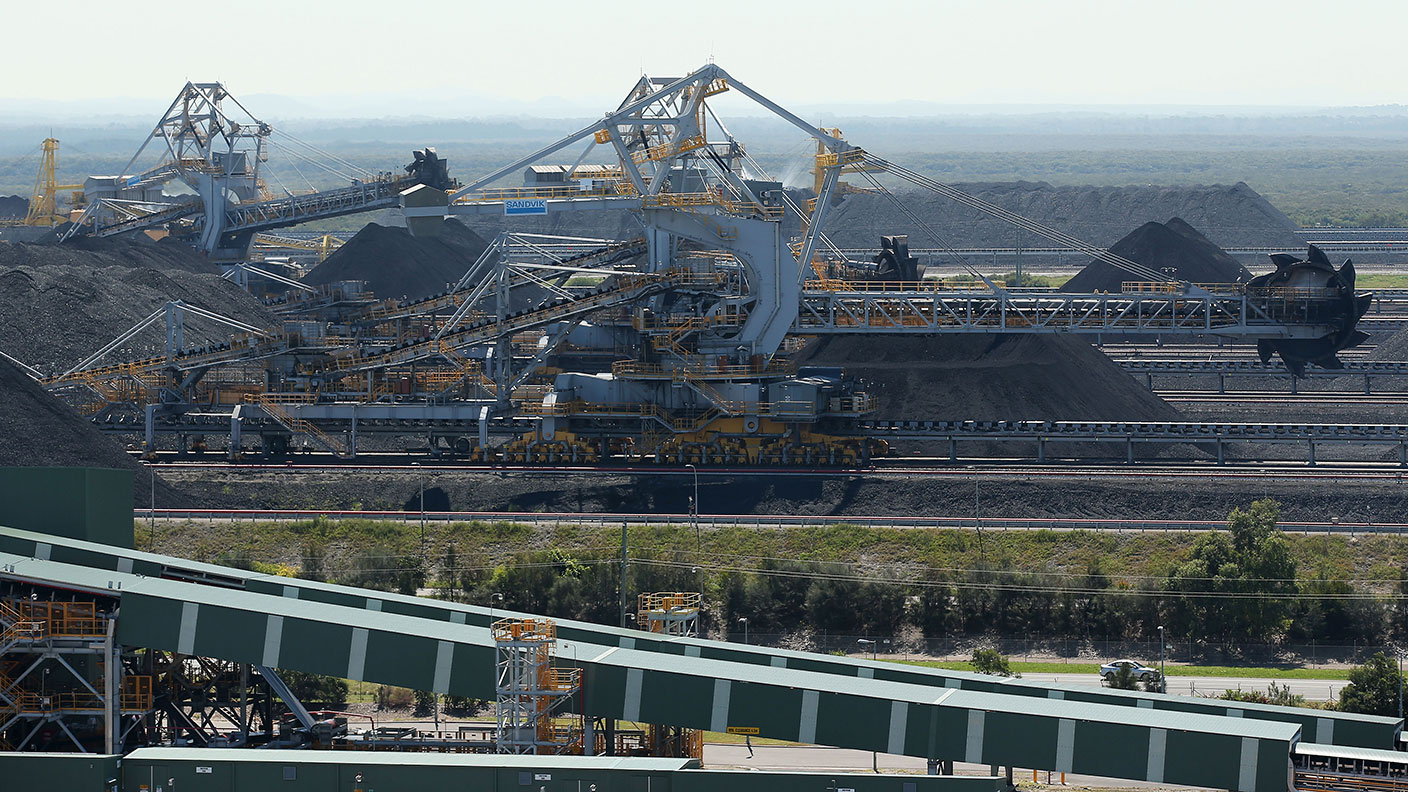Here’s why you should consider investing in Glencore
Fifteen years ago, commodity trading giant Glencore was at its lowest ebb. But it has turned its fortunes around, and its future has rarely looked brighter, says Rupert Hargreaves.


In 2015, the Glencore (LSE: GLEN) share price plunged as the City began to question the company’s very survival.
A sudden slump in commodity prices had caught the group off guard, at a time when it was also carrying a lot of debt. Easy access to finance is vital for commodity traders such as Glencore, and as confidence evaporated, investors started to wonder if creditors would pull the plug.
However, the FTSE 100 company pulled itself back from the brink by raising cash from shareholders and outlining plans to cut debt. And today its outlook couldn’t be more different: surging commodity prices are generating a windfall for the organisation and its traders.
MoneyWeek
Subscribe to MoneyWeek today and get your first six magazine issues absolutely FREE

Sign up to Money Morning
Don't miss the latest investment and personal finances news, market analysis, plus money-saving tips with our free twice-daily newsletter
Don't miss the latest investment and personal finances news, market analysis, plus money-saving tips with our free twice-daily newsletter
As profits have jumped, the share price of Glencore has followed suit. The stock is up 550% from the all-time low in January 2016.
Glencore’s fortunes have greatly improved over the past six years
The future has rarely looked brighter for Glencore as its traders capitalise on rising commodity prices and supply chain disruption.
Glencore started its life as a commodity trader. Then in 2012 it merged with mining powerhouse Xstrata. Under the stewardship of CEO Mick Davis, Xstrata became a global giant by buying assets other companies didn’t want. It specialised in coal and copper and has doubled down on this master plan despite attracting criticism from climate activists.
The strategy is paying off handsomely. Thanks in part to strong coal prices, profit attributable to shareholders hit $5bn (£4.1bn) in 2021, up from a loss of $1.9bn (£1.6bn) in 2020. Asian coal prices doubled last year and have remained high this year.
The trading house is capitalising on what it is calling “pricing differentials” in disrupted energy markets. The firm’s trading arm allows it to buy coal cheaply in one market, and ship it to regions where demand is high.
There are not many other businesses in the world that have access to the kind of commodity infrastructure available to Glencore. As a result of these “pricing differentials” the company is expected to earn around $82 to $86 per tonne from coal sales this year, up from the earlier prediction of $32.8. The group has said it is looking to ramp up coal output by 20% to capitalise on booming demand.
It’s not just the coal market where Glencore is exploiting its competitive position to earn supernormal profits. It’s now forecasting half-year adjusted earnings before interest and tax (EBIT) of $3.2bn for its marketing and trading arm this year. That’s at the top end of management’s long-term EBIT guidance band.
Higher copper prices are also contributing to the firm’s growing bottom line, although due to production snarl-ups, copper production is set to fall by around 3% this year. Still, the company is looking to increase its nickel and ferrochrome production by 3%, which are both vital resources for the green economy.
With its production and trading arms, Glencore is uniquely positioned to profit from this trend. Over the past five years the price of copper has risen by 64% while the price of nickel has surged by 170%.
All of this bodes well for Glencore’s growth, not just over the next few years but for the long-term as well. Refinitiv analyst estimates suggest the company’s earnings will grow by 145% this year to $17bn, although I wouldn’t be surprised if these numbers are revised higher in the months ahead.
Glencore expects “more normal market conditions” to return in the second half of the year. But even the most optimistic analysts do not expect commodity prices to fall dramatically for the next year or so, unless there’s a severe economic downturn (although that’s not out of the question). Even then, as the world tries to shift away from hydrocarbon energy, demand for resources such as copper, nickel and cobalt is projected to continue growing.
Profit growth is helping support the Glencore share price
Based on profit estimates, the business is on-track to get its long-term debt under $10bn this year. If it hits this target, special dividends and share buybacks could follow.
After last year’s results, Glencore said it would return $3.4bn to shareholders this year via dividends, split across two payments. It also announced a $550m share buyback. Analysts think the company could return even more in the years to come.
Current forecasts suggest the business will pay a dividend of $0.57 (46p) per share this year and $0.51 (41p) in 2023. Based on these numbers Glencore will yield 9.9%, making it one of the highest-yielding stocks in the FTSE 100.
For all of Glencore’s attractive qualities, it does have some drawbacks. Investors worried about the climate might not want to buy into one of the world’s largest coal producers. Management estimated in February that coal would provide nearly 40% of earnings before interest, tax, depreciation and amortisation (ebitda) this year.
The organisation is also a bit of a black box. The group’s traders make billions every year buying, selling and moving commodities, which requires huge amounts of capital and the use of derivatives to hedge exposure. However, the nature of trading means shareholders never really know how much exposure Glencore has to certain commodities and how much it owes to different parties.
Despite these drawbacks, there’s no denying the commodity group is minting money today and if analyst forecasts are to be projected, shareholders will be well rewarded over the coming years.
What’s more, based on current growth projections shares in the FTSE 100 company are currently selling on a forward price/earnings (p/e) ratio of 4.2. That seems incredibly cheap for a company projected to report earnings growth of more than 100% this year and one that has a near double-digit dividend yield.
Get the latest financial news, insights and expert analysis from our award-winning MoneyWeek team, to help you understand what really matters when it comes to your finances.

Rupert is the former deputy digital editor of MoneyWeek. He's an active investor and has always been fascinated by the world of business and investing. His style has been heavily influenced by US investors Warren Buffett and Philip Carret. He is always looking for high-quality growth opportunities trading at a reasonable price, preferring cash generative businesses with strong balance sheets over blue-sky growth stocks.
Rupert has written for many UK and international publications including the Motley Fool, Gurufocus and ValueWalk, aimed at a range of readers; from the first timers to experienced high-net-worth individuals. Rupert has also founded and managed several businesses, including the New York-based hedge fund newsletter, Hidden Value Stocks. He has written over 20 ebooks and appeared as an expert commentator on the BBC World Service.
-
 8 of the best properties for sale with indoor gyms
8 of the best properties for sale with indoor gymsThe best properties for sale with indoor gyms – from a four-storey mews house in London’s Knightsbridge, to a 1920s Arts & Crafts house in Melbury Abbas, Dorset
-
 Top stock ideas for 2026 that offer solidity and growth
Top stock ideas for 2026 that offer solidity and growthLast year’s stock ideas from MoneyWeek’s columnist and trader, Michael Taylor, produced another strong performance. This year’s stocks look promising too
-
 Halifax: House price slump continues as prices slide for the sixth consecutive month
Halifax: House price slump continues as prices slide for the sixth consecutive monthUK house prices fell again in September as buyers returned, but the slowdown was not as fast as anticipated, latest Halifax data shows. Where are house prices falling the most?
-
 Rents hit a record high - but is the opportunity for buy-to-let investors still strong?
Rents hit a record high - but is the opportunity for buy-to-let investors still strong?UK rent prices have hit a record high with the average hitting over £1,200 a month says Rightmove. Are there still opportunities in buy-to-let?
-
 Pension savers turn to gold investments
Pension savers turn to gold investmentsInvestors are racing to buy gold to protect their pensions from a stock market correction and high inflation, experts say
-
 Where to find the best returns from student accommodation
Where to find the best returns from student accommodationStudent accommodation can be a lucrative investment if you know where to look.
-
 The world’s best bargain stocks
The world’s best bargain stocksSearching for bargain stocks with Alec Cutler of the Orbis Global Balanced Fund, who tells Andrew Van Sickle which sectors are being overlooked.
-
 Revealed: the cheapest cities to own a home in Britain
Revealed: the cheapest cities to own a home in BritainNew research reveals the cheapest cities to own a home, taking account of mortgage payments, utility bills and council tax
-
 UK recession: How to protect your portfolio
UK recession: How to protect your portfolioAs the UK recession is confirmed, we look at ways to protect your wealth.
-
 Buy-to-let returns fall 59% amid higher mortgage rates
Buy-to-let returns fall 59% amid higher mortgage ratesBuy-to-let returns are slumping as the cost of borrowing spirals.